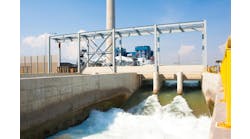Venkat Venkatasubramanian, a professor of chemical engineering at Purdue University, West Lafayette, Ind., outlines his theory in the November 3 issue of the online journal Entropy. The paper, "What is Fair Pay for Executives? An Information Theoretic Analysis of Wage Distributions," can be downloaded at www.mdpi.com/1099-4300/11/4/766.
For many years Venkatasubramanian's research has focused on: risk analysis and management of complex engineered systems; molecular products engineering; cyberinfrastructure for pharmaceutical engineering and materials design; and complex adaptive systems. He addressed these problems using artificial intelligence, informatics, statistics, and mathematical programming techniques.
[pullquote]"You might ask why a chemical engineer is concerned with economics and CEO salaries," Venkatasubramanian says. "Well, it turns out that the same concepts and mathematics used to solve problems in statistical thermodynamics and information theory also can be applied to economic issues, such as the determination of fair CEO salaries."
Central to his theory is the economic interpretation of entropy. "There have been many attempts to find a suitable interpretation of entropy for economic systems without much success," he explains. "Just as entropy is a measure of disorder in thermodynamics and uncertainty in information theory, what would entropy mean in economics?"
Entropy as a measure of "fairness" in economic systems, revealing a connection between statistical thermodynamics, information theory and economics, says Venkatasubramanian. Using the theory, the ideal pay distribution is determined to be "lognormal," a way of characterizing data patterns in probability and statistics.
Venkatasubramanian estimates that 2008 salaries of the top 35 U.S. CEOs were about 129 times their ideal fair salaries. CEOs in the Standard & Poor's 500 averaged about 50 times their fair pay, raising questions about efficiency of the free market to properly determine fair CEO pay, he says. Fair pay for an average S&P 500 CEO should ideally be in the range from eight to 16 times the lowest employee salary.
The ratio of CEO pay to the lowest employee salary has gone up from about 40-to-1 in the 1970s to as high as 344-to-1 in recent years in the U.S. However, the ratio has remained around 20-to-1 in Europe and 11-to-1 in Japan, according to available data, he says.
"These ratios are not that far off, when compared to U.S. ratios, from the ideal benchmark estimates from my theory," Venkatasubramanian says. "Even in the U.S., the CEO pay ratios in the 1960s and 1970s were much more reasonable and in general agreement with the ideal values. So the executive pay excesses appear to be a recent phenomenon. This appears to be another valuation bubble — the CEO valuation bubble — much like the ones we have witnessed in stocks, real estate and commodities."
Venkatasubramanian and his co-authors conclude that their analysis shows that a certain amount of seeming inequality of pay is inevitable in organizations. "Given this reality, the lognormal distribution is the fairest inequality of pay. One may view our result as an economic law in the statistical thermodynamics sense. The free market will 'discover' and obey this economic law if allowed to function freely and efficiently without collusion like practices or other such unfair interferences."
This result is the economic equivalent to the Boltzmann distribution of the energy landscape for ideal gases. In spirit, it's like Boyle's law for ideal gases which ignores factors such as intermolecular forces and molecular, but nevertheless provides a useful basis for developing models for non-ideal systems.
"In a similar manner, our theory has its obvious limitations and does not take in to account industry or company specific factors, complexities of human interactions, competition and other market conditions, and so on. However, we present it with the hope of stimulating further research to examine its implications in greater depth and breadth for a wide variety of contexts in economics and social sciences," they conclude.
"This paper tackles an important problem in a new way. Venkat is a brilliant engineer who sees patterns that others miss. It's wonderful to see this kind of cross-disciplinary investigation, broadening the range of ideas and mathematical tools being applied to crucial issues like CEO pay," Says William Masters, professor and associate head of Purdue's Department of Agricultural Economics.
According to CP's latest survey (www.ChemicalProcessing.com/articles/2009/072.html), the average salary for chemical engineers reported by respondents is $107,804.
Seán Ottewell is Chemical Processing's Editor at Large. You can e-mail him at [email protected].
